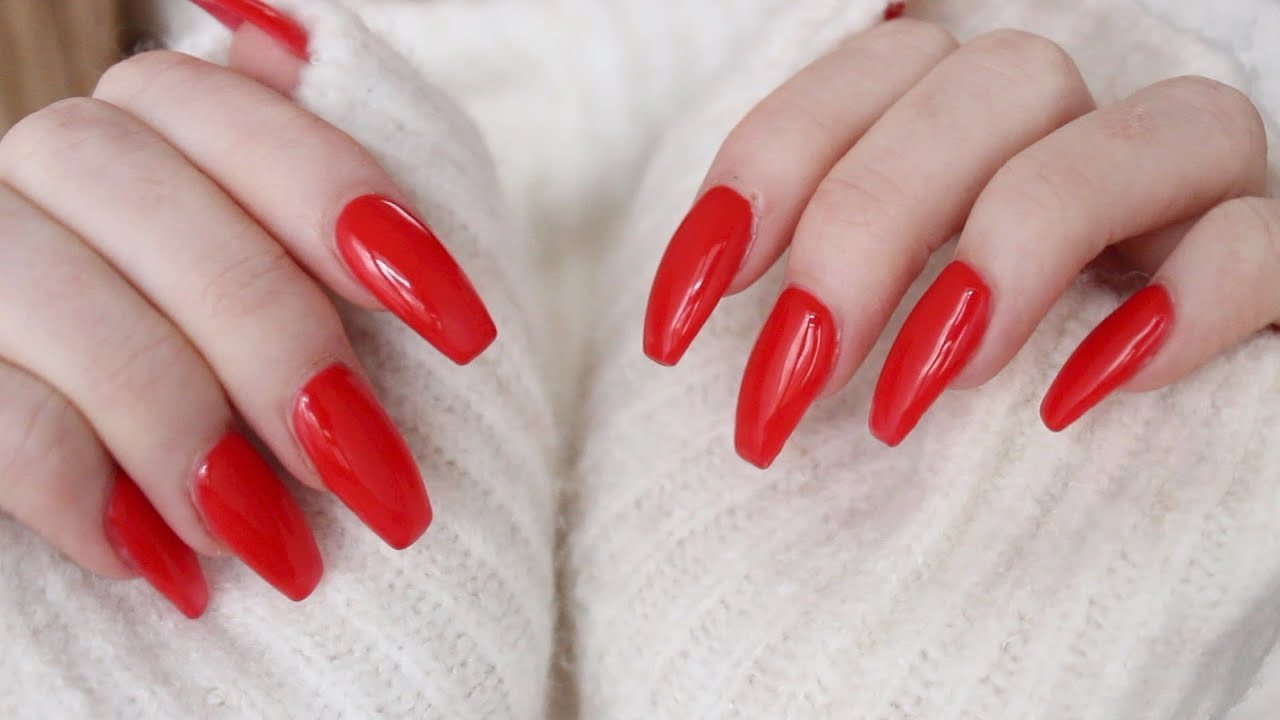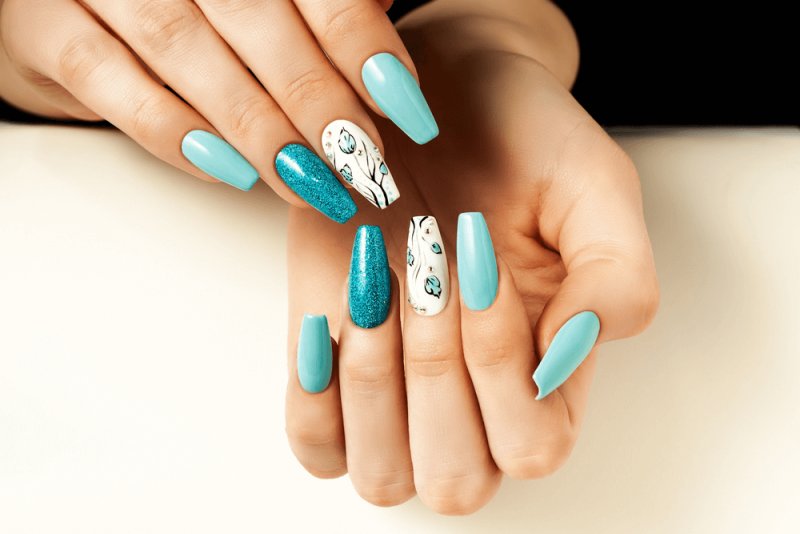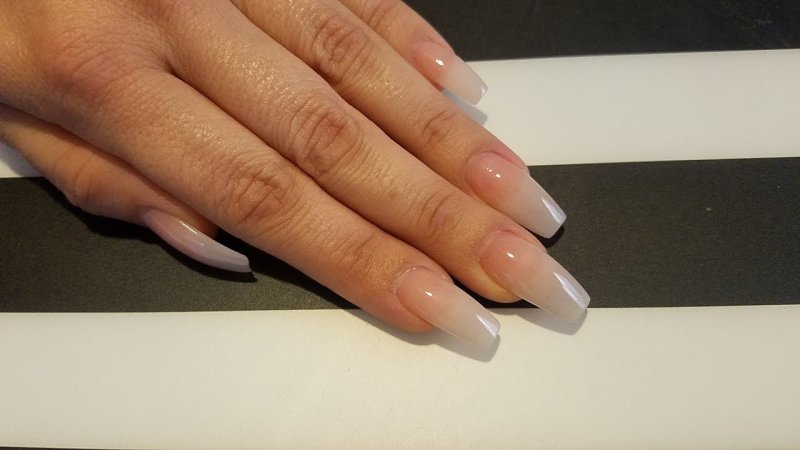We find ourselves walking through the isles of beauty stores, figuring out which product should be best for us. If you’re lazy or out of time to give your nails a manicure, artificial nails come to the rescue.
In this article, we will discuss artificial nail types so that you can choose the one that is best for you.
Contents
What are artificial nails?

Artificial nails are also known as fake nails, and they are placed over the real nails as a part of a fashion accessory. Some artificial nails mimic real fingernails as much as possible. In contrast, others are to create an artistic appearance.
Artificial nails are only extensions and should not be thought of as replacements. Fake nails may require regular maintenance, and it is advised to visit a nail salon every two weeks.
Artificial nails usually last long, but a routine visit can prove to be very beneficial. These nails are highly durable and are very versatile in terms of shapes and designs. These are some factors that gain artificial nail’s colossal advantage over other manicures.
What are artificial nails made of?
Artificial nail extensions are made of a product known as acrylic plastic. Acrylic is the generic name given to the plastic made from a chemical known as methacrylate.
- The acrylic is made with a reaction of a monomer liquid with a polymer powder. The mixture is blended with the liquid to adjust the consistency of the nails. These are usually hard, inflexible materials but can be blended with other materials to provide some flexibility.
- Other ingredients are used to hook the polymer chains together to make the plastic more rigid.
- Different dyes and pigments are also used to alter the resin’s appearance.
- There is wide use of titanium dioxide to whiten the nails and create a more natural appearance. Flow agents in the artificial nails control how nail paints will spread on the artificial nails.
- Color stabilizers are also added to prevent them from yellowing, and these substances also absorb the ultraviolet rays, which prevents the resin from being damaged.
3 Types of Artificial Nails
The reasons for using artificial nails can be plenty. Some might want to look chic and sharp, while others might face problems in growing nails. The reasons may be many, but the solution is the same, artificial nails.
There are mainly three different types of artificial nails, namely acrylic nails, gel nails, and silk nails. Now let us discuss each of these types in detail.
Acrylic nails

In this, your nail technician will mix a monomer liquid with a polymer powder and brush the mixture onto your nails. Usually, this is done on the entire nail, but You can also do it on the tips of your nails to extend your nails. The mixture hardens as it is exposed to air.
There might be a strong, pungent smell during the application process due to chemicals, but it is not harmful.
Acrylics grow with your nails over time, and it requires routine filling every two to three weeks. It should be done in a salon by a professional where the technician will gently file down the acrylic edge closest to the nail bed then fill the space between the nail bed and existing acrylic nails.
The removal of acrylic nails is quite simple. When you want to get your acrylic nails removed, consult your technician, and they will remove them quite easily by soaking your nails in nail polish remover for 10-15 minutes. However, if you accidentally get your nails caught in anything, then it might be risky. Your whole nail can get removed from the nail bed.
Gel nails

Gel nails, one of the popular artificial nail types, have a consistency like nail polishes these days, unlike the toothpaste-like gels of the past. These gels are brushed onto the nails, nail tips, or nail appliqués to extend the nails.
After the application, your technician might ask you to put your nails under UV lights for the product to harden. The process generally takes 2 minutes, and there is no our during the application process. The maintenance process is similar to acrylic nails.
It should be done in a salon by a professional where the technician will gently file down the acrylic edge closest to the nail bed then fill the space between the nail bed and existing acrylic nails.
The removal is quite simple and similar to acrylic nails. When you want to get your acrylic nails removed, consult your technician, and they will remove them quite easily by soaking your nails in nail polish remover for 10-15 minutes.
Silk Wrap nails

These are fabric wraps glued together to strengthen weak nails and grow out cracked nails. These wraps are usually made of silk, but you can also create some linen, paper, or fiberglass.
Your nail technician will cut the wrap into your nail’s shape, fix it onto the nail then brush the glue to hold it in place. Silk nails are generally temporary and can loosen if you do work, which involves too much water. However, your nail technician can fix it the next time you go onto your salon visit.
Tips for Artificial Nails
Now you know about the artificial nail types, but there are few things to take care of when going for artificial nails.
- You should go to a professional nail artist or a reputed nail salon to get your nails done. Doing this at home requires far more skills than just coloring your hair. Any mistakes can lead to fungal infections.
- Never peel off artificial nails. Selling them off will lead to yanking off the top layer of your nails. After these artificial nails grow out, your natural nails are visible. Go to a professional technician to get the filling done.
- Choose your nail technician based on research and recommendations from your friends or relatives. Do not base your choice on online reviews or low prices. The salon might look attractive on the outside but might lack skills on the inside. If your nail technician is not experienced, then they might file your nail bed too thin while gluing your artificial nails, which might damage your nails in the future.
- Choose a nail salon that is clean and hygienic and the tools that are disinfected after every use.
- You and your nail technicians should both wash your hands before working on artificial nails. This will ensure cleanliness during the application process and will prevent any bacteria or germs from growing.
- Do not allow your nail technicians to mess with your cuticles. Cutting or pushing back your cuticles might disturb the balance between your nail bed and fingernail, which might lead to infections. So make sure to leave your cuticles alone.
- Do not try to fix your nails yourself. If they are broken or damaged, go to a professional to get them fixed.
- It is essential to know the maintenance of your nails between visits. So make sure your technician is knowledgeable and can provide you with all the necessary information accurately.
- Let your technician know if you face any problems. If there is any pain after the application or if you see the advancement of any rashes or itchiness around the fingertips, let your technician know. This is because they don’t hurt or itch.
- Do not always depend on artificial nails. Give your nails some break and go natural now and then. Allow your nails to breathe to maintain the health of your natural nails.
Readers like you help keep The Beautyholic running. When you buy through links on our blog, as an Amazon Associate, we earn from qualifying purchases at no extra cost to you.
Artificial nails can provide great looks and can come in very handy if you are going to a party or an event and you do not have time to fix your ugly-looking nails. If you don’t fit correctly and get it done by a professional, it can be risky and can lead to infections. So make sure to get it done by a pro. That was all about artificial nail types.
